
Update: This article was last updated on 25th July 2024 to reflect the accuracy and up-to-date information on the page.
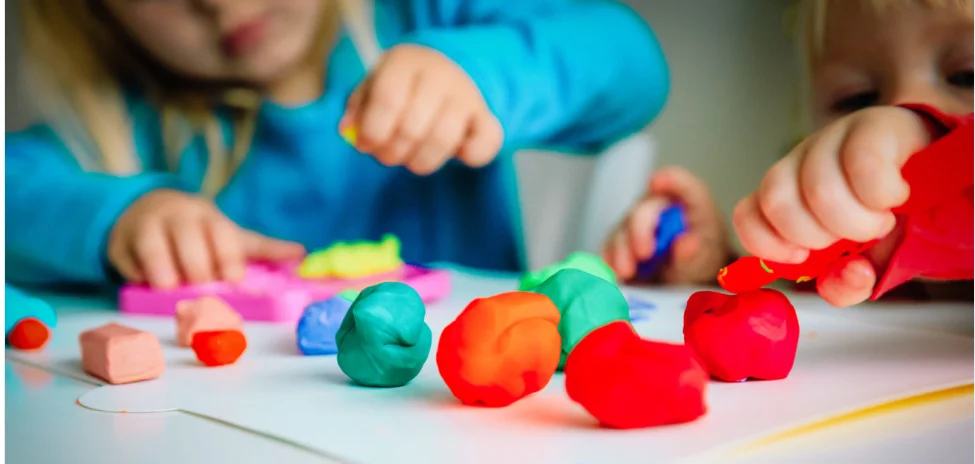
Image Source: https://www.rchsd.org/
A relaxed environment, a game full of fun and challenges, and your child – it’s the ideal setting to get your kids moving. Games are a fantastic way to motivate kids to engage in physical activity.
Games also help in coordination improvement and motor skill development in children. For parents, indulging in games with kids could be a great way to connect and educate one another in a laid-back style.
According to WHO, children and adolescents aged 5-17 years should dedicate a minimum of 60 minutes per day to moderate-to-vigorous intensity, mostly aerobic, physical activity, across the week. It has significant health benefits for hearts, bodies, and minds.
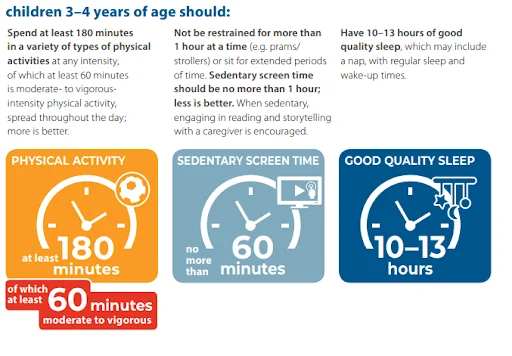
But the big question is where to find interesting games. The following are some fun and crazy and fun challenges for kids that will get your child up, moving, and having fun if they do not show interest in physical activities:
Source: WHO
Recommended Reading: AUTHORITATIVE PARENTING: THE BEST STYLE OF PARENTING
Table Of Content
| Game | Description |
|---|---|
| Game 1: No Thumbs Challenge | Engaging and Hilarious Activities without Using Thumbs |
| Game 2: Blindfold Maze | Building Trust and Coordination Through a Blindfolded Obstacle Course |
| Game 3: Telephone Game Challenge | Testing Communication Skills and Enjoying a Game of Whispers |
| Game 4: Blindfolded Drawing Challenge | Unleashing Creativity with Blindfolds and Drawing Materials |
| Game 5: Beans and Chopsticks Challenge | Enhancing Fine Motor Skills and Hand-Eye Coordination |
| Game 6: The Balloon Challenge | Creative Thinking and Problem-Solving with Balloons |
| Game 7: Hot Potato, Kid’s Edition | Adding a Twist to the Classic Hot Potato Game |
| Game 8: All Tangled Up | Building Verbal Communication, Teamwork, and Strategic Thinking |
| Game 9: Alligator Swamp Trail | Imaginative Play and Leadership Skills in a Balancing Game |
| Game 10: 'Say it backward' Challenge | Stimulating Critical Thinking with Word Reversal |
1. No Thumbs Challenge
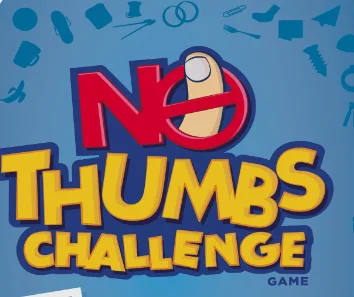
Have you ever considered how you may function without your thumbs or how much you take them for granted? In addition to creating a mess, the challenge will teach you how to use your hands instead of your thumb. Tape the thumbs of the participants so they can’t use them.
Give them a specific activity after that, such as opening a door, putting on clothing, eating a bowl of spaghetti, holding a pencil, or applying nail paint. Then back off and see how this straightforward task can quickly become amusing and complex.
The game can be played at sleepovers with teams being formed. The round is won by whoever completes the tasks in the shortest time!
This improves skills such as creative thinking, problem-solving, perseverance, etc.
Benefit: Enhances problem-solving skills by requiring alternative methods for everyday tasks without thumbs.
2. Blindfold Maze
The Blindfold Maze Course is a great way to get kids moving while teaching them to trust and communicate. To set up the obstacle course, create an obstacle course with various objects, such as chairs, tables, cones, etc., that the kids must navigate through while blindfolded.
Designate one player as the guide to give verbal instructions to the blindfolded person on how to navigate through the obstacle course.
When played properly, it can help children’s motor integration and sensory processing skills. When blindfolded, they have to process information received through their senses, interpret it, and act accordingly.
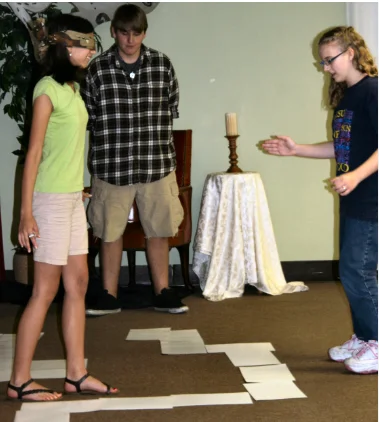
Image Source: https://pryorconvictions.com/
Benefit: Improves teamwork and communication skills as participants guide each other through obstacles.
Most significant adverse effects of reduced physical activity on children according to parents in Canada as of January 2023

3. Telephone Game Challenge
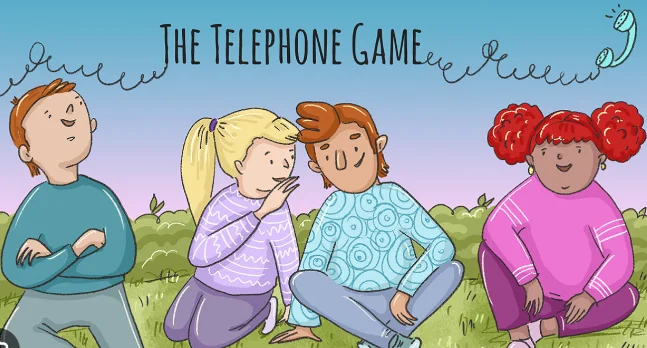
Image Source: https://icebreakerideas.com/
The Telephone Game, also known as the Chinese Whispers, is one that everyone finds rather enjoyable and is based on possible confusion and the inability to hear.
Players can play in one line or two. A word, phrase, or sentence is delivered to the first person in line. A message is then whispered into the ear of the next person in line. The following player repeats the same action until the message reaches the end of the line.
The final participant in line must then declare what the word, phrase, or sentence was. If it is correct, it is considered a win. If it is incorrect, it is viewed as a loss. Either way, it results in a lot of excitement and fun and improves listening habits, receiving and giving messages, and much more
Benefit: Enhances listening and communication skills by passing messages accurately through a chain.
4. Blindfolded Drawing Challenge
This challenge is an interesting opportunity to get kids to think creatively while having fun! To set up the challenge, you will need paper, markers or crayons, and blindfolds for each participant. The goal of the challenge is for each participant to draw a picture while blindfolded in the allotted time.
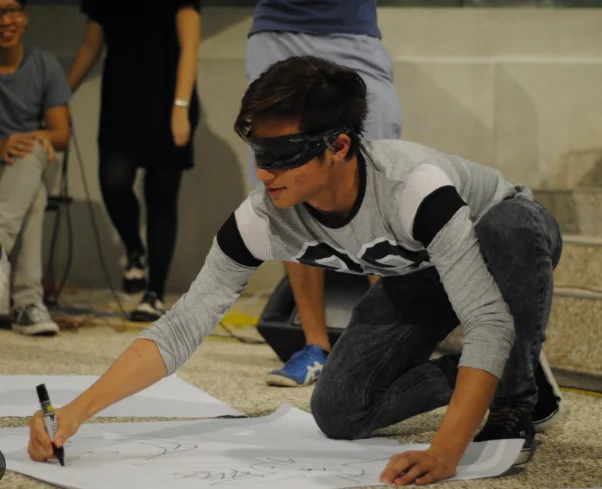
Each participant should be given a piece of paper, markers, or crayons before being blindfolded. Once everyone is blindfolded, the timer should start, and each participant must draw their picture without being able to see what they are drawing!
At the end of the allotted time, participants should take off their blindfolds and show their pictures to see who drew the best picture!
Benefit: Sparks creativity by challenging participants to visualize and draw without sight.
5. Beans and Chopsticks Challenge

Image Source: https://omgjapan.com/
Beans and Chopsticks is a simple game that requires two players and a handful of beans. The game’s goal is to move all the beans from one side of the table to the other using chopsticks.
The game is a great way to practice fine motor skills, hand-eye coordination, and concentration. It also encourages problem-solving skills as players must figure out how to move the beans without dropping.
This challenge is popular amongst kids regardless of the time of year, day, or age. The absence of risks in the challenge is its best feature.
Benefit: Develops fine motor skills and hand-eye coordination through precise movements.
6. The Balloon Challenge
The Balloon Challenge gets kids thinking creatively while also having a lot of fun! You will need several balloons of different sizes and colors to set up this challenge. Each team will be given a balloon and must figure out how to get it from one side of the room to the other without using their hands or feet.
Recommended Reading: THE IMPORTANCE OF PLAY IN CHILD DEVELOPMENT
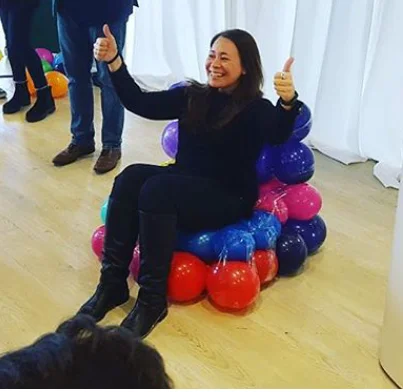
Image Source: https://www.seroundtable.com/
Benefit: Encourages creative thinking and teamwork as participants find innovative ways to move balloons without hands or feet.
7. Hot potato, kid’s edition
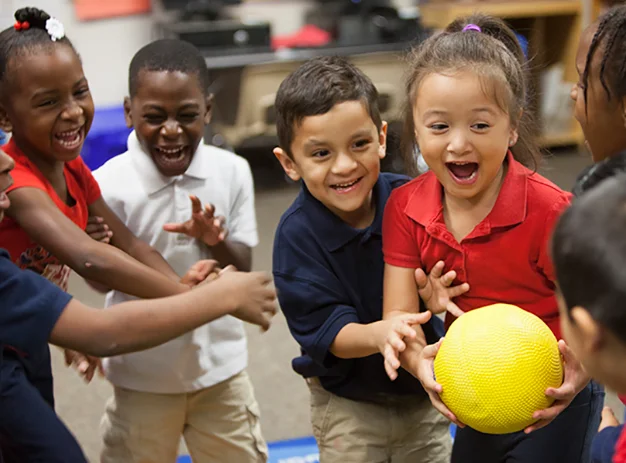
Image Source: Google
A useful game to enhance focus and memory, Hot Potato is one of the most well-liked humorous children’s games for all ages.
Play some music, pass a balloon around, and put some bounce in your steps.
The player holding the balloon must either sit down or pop it with their hands each time the music stops. The winner is the last man standing!
Benefit: Enhances reflexes and agility in a fun and engaging manner.
8. All Tangled Up
All Tangled Up is ideal for a large group of kids. Kids take one hand and grab the hand of anyone in the group except the people standing next to them.
The players take their other hand and grab the hand of anyone in the group except the people standing next to them and the person they are already holding hands with. To untangle the situation while holding onto each other’s hands is difficult. The improvement of verbal communication, teamwork, strategic thinking, etc, is enhanced when playing this.
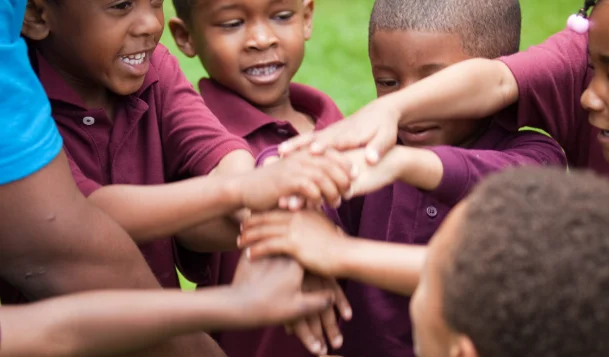
Image Source: https://www.playworks.org/
Benefit: Builds teamwork and problem-solving skills as participants work together to untangle themselves.
9. Alligator Swamp Trail

Image Source: https://www.playworks.org/
Children are encouraged to use their imaginations while focusing and applying good leadership principles in this balancing game. Describe an alligator swamp with ravenous gators to set the scene. Kids must maintain a tight line to avoid becoming dinner.
Parents can start exploring the swamp while giving detailed descriptions of all the creatures and plants they come across. If a child steps out of line . . . “Chomp!” Be sure to stimulate dramatic play as kids visualize the alligators and quickly jump back in line.
Benefit: Stimulates imagination and leadership skills by navigating through imaginary obstacles.
10. ‘Say it backward’ Challenge
Unleash your child’s critical thinking abilities to the fullest with this game. Getting the participants to speak words backward without stuttering or mispronouncing them is the challenge. The round is won by the person who correctly says it.
A time limit guarantees that everyone has an equal amount of time to learn a word’s reverse pronunciation. You can create a list of easy words that get harder as the rounds progress to help you get used to the game.
These challenges pique children’s interest and keep them entertained and engaged. These games are designed to boost confidence, encourage creativity, and foster problem-solving skills. They can also be an ideal way to bond with family and friends.
Benefit: Boosts cognitive flexibility and linguistic skills by challenging participants to speak words backwards accurately.
These fun challenges for kids pique children’s interest and keep them entertained and engaged. These games are designed to boost confidence, encourage creativity, and foster problem-solving skills. They can also be an ideal way to bond with family and friends.
With so many fun challenges available, there is something for everyone. With the right challenge, kids can blast while learning something new. Physical challenges are not limited to physical activities – they also include mental and creative challenges for kids, making them far more advantageous for children to indulge in.
Moonpreneur is on a mission to disrupt traditional education and future-proof the next generation with holistic learning solutions. Its Innovator Program is building tomorrow’s workforce by training students in AI/ML, Robotics, Coding, IoT, and Apps, enabling entrepreneurship through experiential learning.


























It sounds like an excellent way to keep kids entertained and active by giving them these wild and wacky challenges. These challenges give kids the outlets they need to express their energy and creativity, which is something that’s vital. They’ll love tackling these thrilling activities, I’m sure of it!
I admire how these difficulties are made to be kid-friendly and secure. Prioritising their well-being and making sure the activities are age-appropriate are essential. We may positively and actively promote their physical and mental growth by presenting them with these enjoyable challenges.
What a fantastic method to engage kids in problems in the real world and get them away from their devices! It’s encouraging to find activities that encourage mobility, creativity, and imaginative play in the modern digital world. These difficulties will undoubtedly hold their interest and provide them with some priceless childhood memories.
After reading your blog, I returned to my childhood memory of the “build the tallest tower” challenge, where we built our towers using various tools and techniques. The applause and celebrations were transmitted each time a tower beat the previous record, fostering a spirit of cooperation and success.
Anybody tried the pizza challenge?
I recently participated in a pizza challenge during my summer holidays after being invited by a friend, and it was a great adventure full of excitement. I was there to rate the different varieties of pizzas, as this required participants to sample various pizzas and evaluate them according to taste, toppings, and overall dining experience.
A telephone game challenge may be interesting and entertaining, but when it is performed with several people, it does not always give a full understanding of effective communication.
Can you design a paper airplane that can fly in a loop-de-loop?
Creating a loop-de-loop paper airplane requires careful design. Begin with a sleek, symmetrical body and curved wings for lift. Add a slightly pointed nose for stability. Experiment with balance and weight distribution. Test, adjust, and refine until achieving the desired loop-de-loop motion.
If you were to make a unique treasure map, what kind of landmarks would you include?
For a whimsical treasure map, I’d incorporate fantastical landmarks like “Dragon’s Lair,” a mysterious forest called “Enchanted Grove,” and a hidden waterfall known as “Whispering Cascades.” There’d also be a “Goblin’s Bridge” and a “Mermaid’s Cove,” adding an element of magic and adventure to the quest.